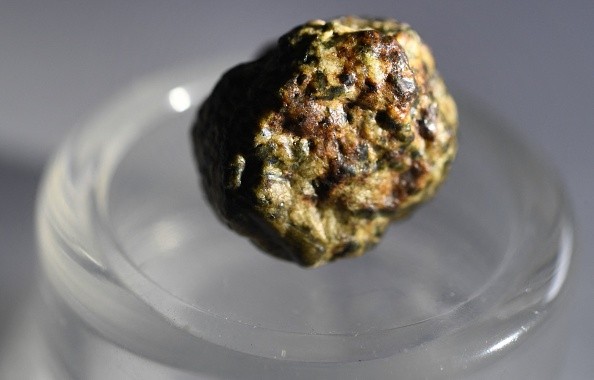Antarctica is a difficult place to work for obvious reasons: it's freezing cold, remote, and wild. It is, however, one of the best places in the world to look for meteorites.
This is due in part to the fact that Antarctica is a desert, and the dry climate limits the amount of weathering the meteorites experience.
Aside from the dry conditions, the landscape is ideal for meteorite hunting because the black space rocks stand out against the snowy fields.
Even when meteorites sink into the ice, the churning motion of the glaciers against the rock below helps re-expose meteorites near the surface of the continent's blue ice fields.
A 17-pound meteorite discovered in Antarctica
 (Photo : FRED TANNEAU/AFP via Getty Images)
(Photo : FRED TANNEAU/AFP via Getty Images)

An international team of researchers who recently returned from Antarctica can attest to the continent's friendliness to meteorite hunters: they brought back five new meteorites, including one weighing 16.7 pounds (7.6 kg).
Maria Valdes, a research scientist at the Field Museum and the University of Chicago, estimates that only about a hundred of the 45,000 meteorites recovered from Antarctica over the last century are this size or larger.
When it comes to meteorites, size doesn't always matter, and even tiny micrometeorites can be extremely scientifically valuable, according to Valdes, but finding a large meteorite like this one is rare and exciting.
Valdes was one of four scientists on the mission, which was led by Vinciane Debaille of the Université Libre de Bruxelles (FNRS-ULB) and included Maria Schönbächler (ETH-Zurich) and Ryoga Maeda (VUB-ULB).
The researchers were the first to investigate potential new meteorite sites mapped using satellite imagery by Veronica Tollenaar, a ULB glaciology thesis student.
Going on an adventure and exploring unknown areas is exciting, but Debaille also had to deal with the reality on the ground, which is much more difficult than the beauty of satellite images.
Despite traveling in late December during Antarctica's summer, temperatures hovered around 14° F (-10° C).
Valdes notes that while on their trip, it was colder in Chicago than in Antarctica on some days, but spending days riding snowmobiles and trekking through ice fields, followed by sleeping in a tent, made the Antarctic weather feel more extreme.
The team's five recovered meteorites will be analyzed at the Royal Belgian Institute of Natural Sciences; in the meantime, sediment containing potentially tiny micrometeorites has been divided among the researchers for study at their respective institutions.
Valdes is excited to see what the meteorite analyses reveal because "studying meteorites helps us better understand our place in the universe; the larger the sample size of meteorites we have, the better we can understand our Solar System, and the better we can understand ourselves," as per ScienceDaily.
Also Read: Scientists Find Extra-Terrestrial Water Inside Winchcombe Meteorite That Crashed in UK Last Year
Antarctic meteorite
any of a large group of meteorites discovered in Antarctica since 1969, first by Japanese expeditions and then by US and European teams, as per Britannica.
Although meteorites fall more or less uniformly across the Earth's surface, many that fall in Antarctica are frozen into its ice sheets, which slowly flow from the continent's center toward its edges.
Patches of ice become stranded behind mountain peaks in some places and are forced to flow upward.
These stagnant patches are eroded by strong winds, exposing and concentrating meteorites on the ice surface.
These areas, known as blue ice because of their color, have produced over 35,000 individual meteorites ranging in size from thumbnail to basketball in just a few decades.
Despite the fact that many meteorites are paired (parts of the same original fall), the Antarctic collection contains several thousand new samples, which is comparable to the total number of catalogued meteorites collected elsewhere over the past several centuries.
Antarctic meteorites have provided more specimens of poorly represented meteorite types as well as a few previously unknown types.
Meteorites from the Moon were discovered in Antarctica, and the majority of lunar and Martian meteorites have been collected there.
Antarctic meteorites have spent between a few thousand and a million years on Earth. As a result, they shed light on the types and abundances of meteorites that fell to Earth before recorded history.
Related article: Meteorite Discovered, Remnant of Ancient Asteroid Collisions
© 2024 NatureWorldNews.com All rights reserved. Do not reproduce without permission.



![Climate Change is Reducing Dust Levels Worldwide as Arctic Temperature Warms [Study]](https://1471793142.rsc.cdn77.org/data/thumbs/full/70320/280/157/50/40/climate-change-is-reducing-dust-levels-worldwide-as-arctic-temperature-warms-study.jpg)

